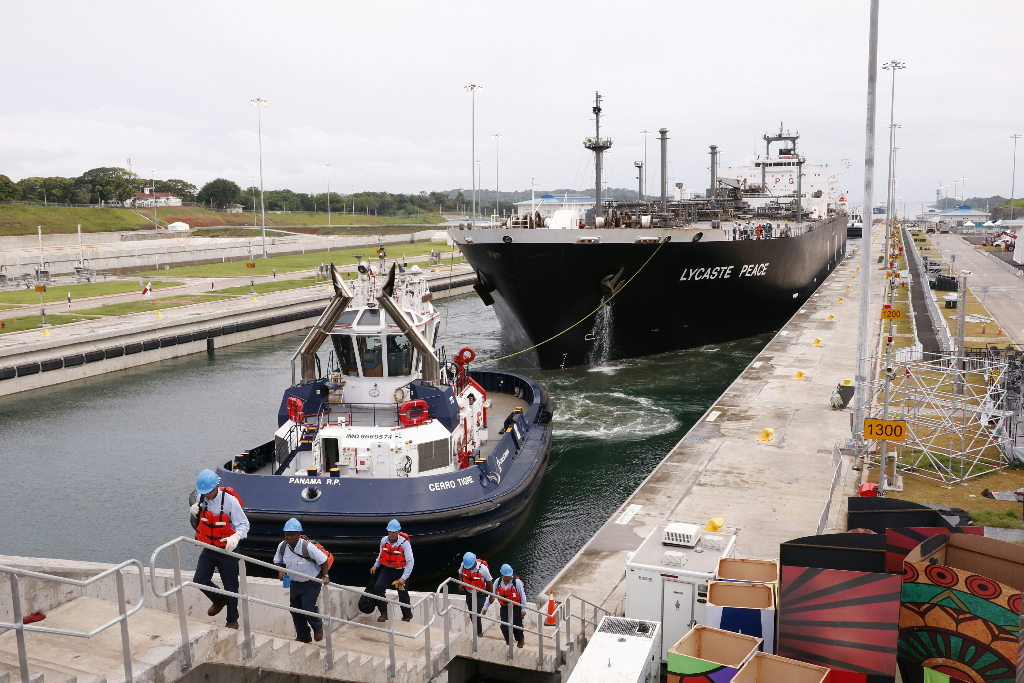The opening of the new, wider Panama Canal locks in June should result in more cargo for some ports. U.S. container ports have been scrambling to deepen their navigation channels to handle larger post-Panamax containerships.
But what does this mean for the workboat industry? In WorkBoat's November cover story due out later this month, Kirk Moore reported that the wider canal brings big challenges to the workboat sector but it also offers opportunity.
Ed Kelly, executive director of the Maritime Association of the Port of NY/NJ, told Kirk about the need for bigger and more powerful tugs due to the windage on the sides of the new larger (up to 1,400' and 13,000 TEUs) Panamax containerships. “The number of tugs per vessel and the power of tugs will have to be increased,” he said.
That’s good news for yards such as Washburn & Doughty, which is building 6,000-hp tugs for Moran, and Horizon Shipbuilding, which is currently busy building the first of up to four 6,770-hp escort tugs for McAllister Towing.
An 1,100' ship escort is typically made up of three tugs with 5,000 or 5,100 hp each. McAllister’s Mike Reagoso said, “Everyone’s building bigger equipment that I know of on the East Coast.”
But just because these new Panamax behemoths will require higher-horsepower tugs and more of them, that won’t necessarily equate to more ship-assist business.
Why? Because some say that these bigger containerships combined with more efficiency may actually reduce work for the tugs and others that serve them. One ship pilots group said that the math indicates that the number of ship calls will be fewer.
Also, there has been a big overcapacity problem in the container sector for several years. The recent Hanjin Shipping Co. bankruptcy may help and it’s expected that the sector will see more consolidation.
But there are plenty of positive signs out there for tug companies and other workboat-related businesses. The widened canal should handle a lot of U.S.-produced liquefied natural gas to East Asia markets, particularly Japan. There have also been positive signs at the port of New York and New Jersey, which saw average yearly cargo growth of 4% since 2000, and other U.S. ports.





